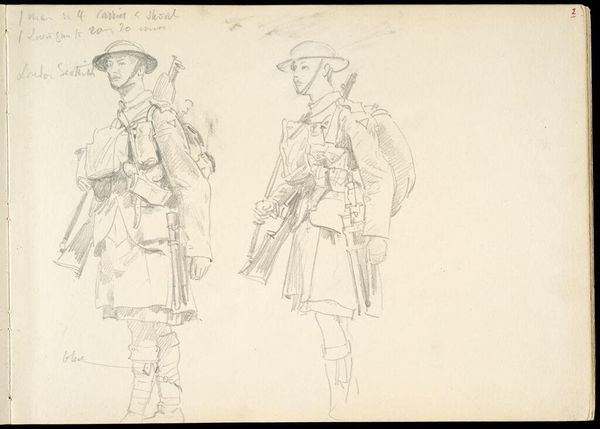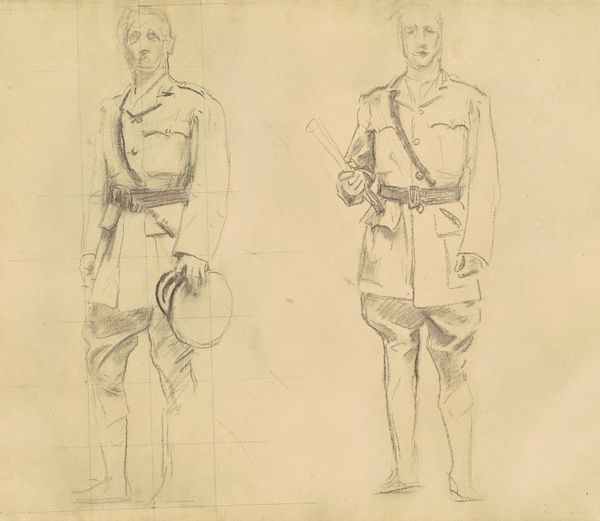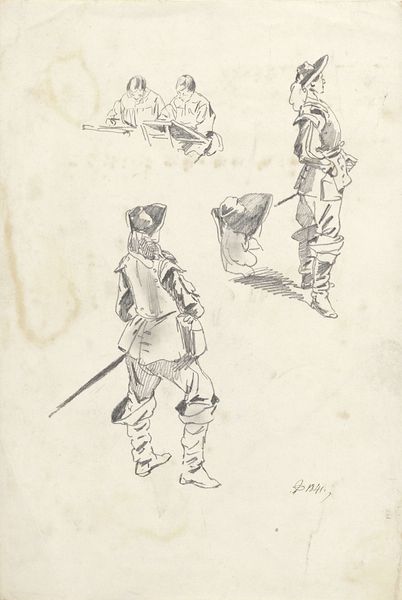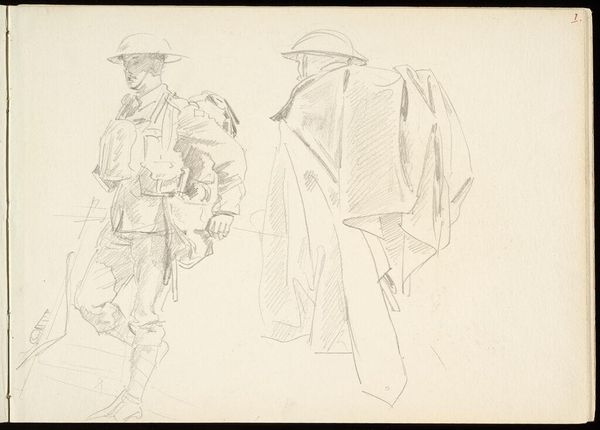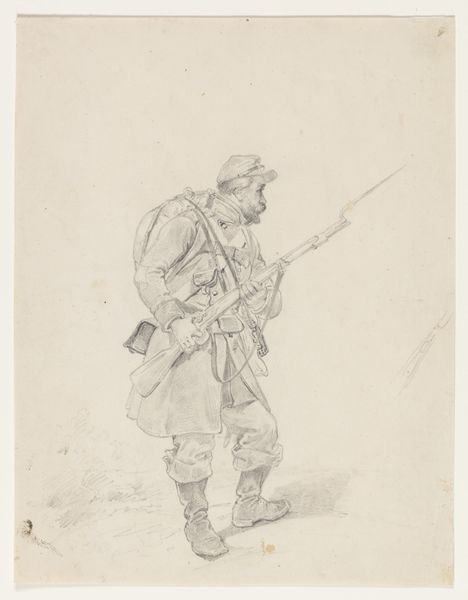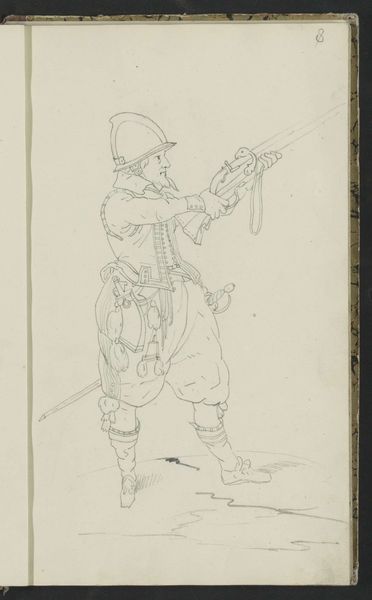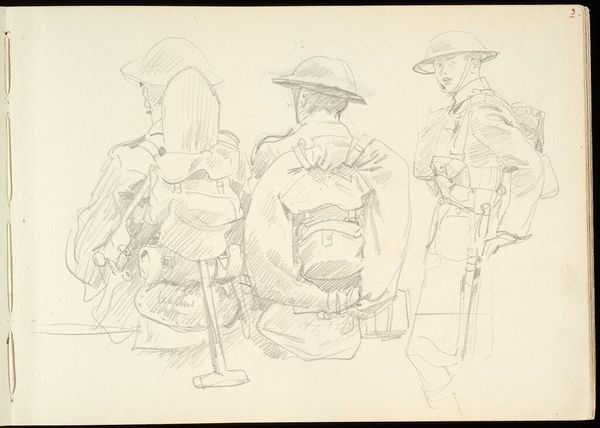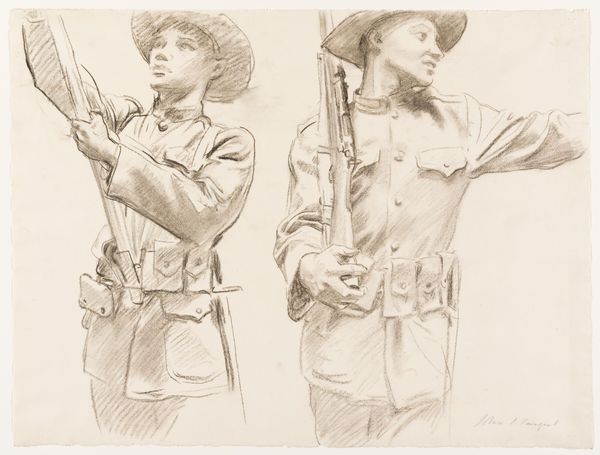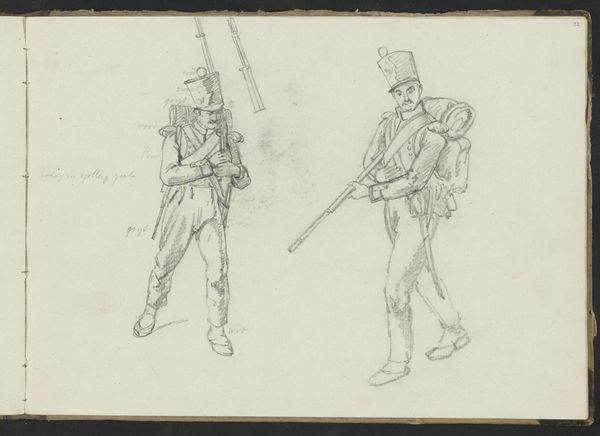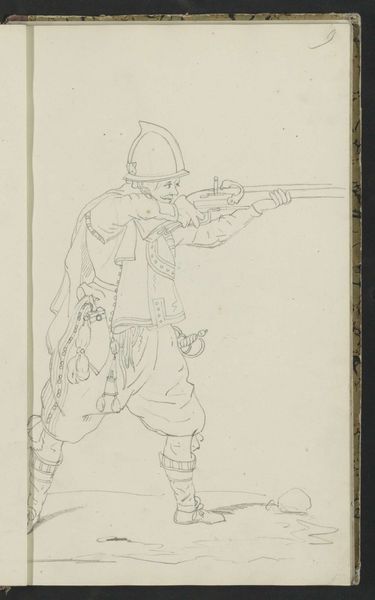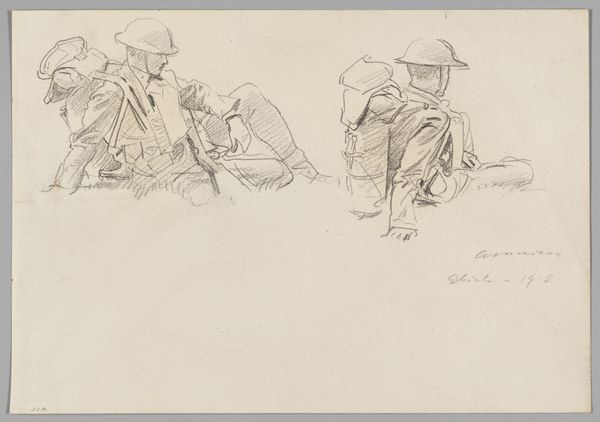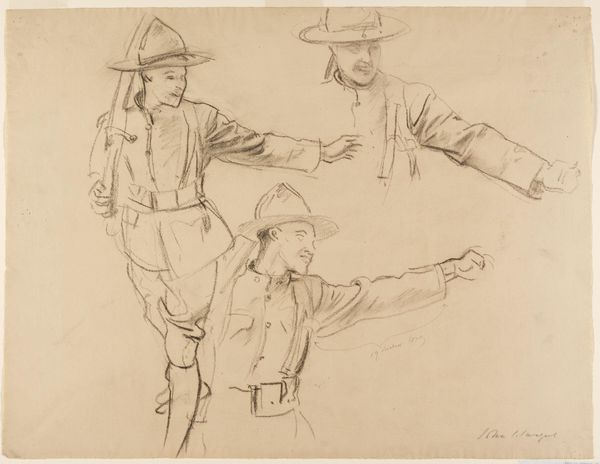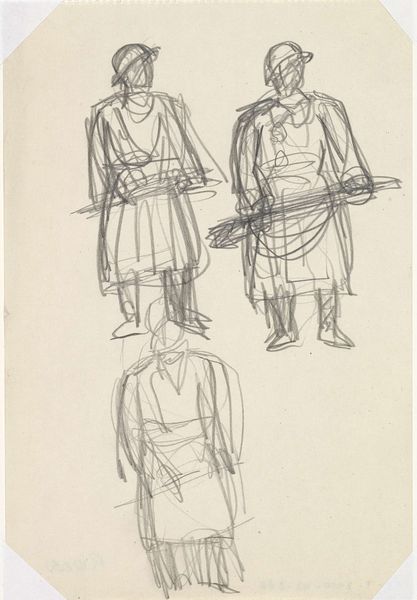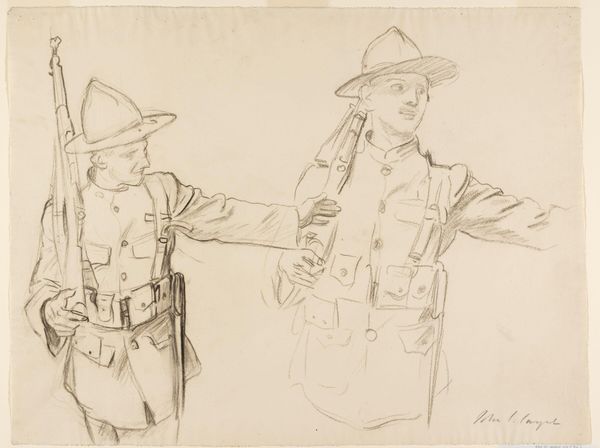
drawing, pencil
#
drawing
#
imaginative character sketch
#
landscape
#
personal sketchbook
#
idea generation sketch
#
sketchwork
#
character sketch
#
dynamic sketch
#
pencil
#
sketchbook drawing
#
history-painting
#
storyboard and sketchbook work
#
fantasy sketch
#
initial sketch
Copyright: Public Domain: Artvee
Editor: Here we have John Singer Sargent’s "Studies for ‘Entering the War,’" created in 1918 using pencil. It's a sketch showing figures in uniform. They seem weighed down, not just by their equipment but by the gravity of the situation, I suppose. What stands out to you about this work? Curator: Well, knowing Sargent, famed for his society portraits, shifted to depicting the First World War reveals much about the changing role of the artist and art itself during times of conflict. How could an artist, particularly one known for glamour, contribute meaningfully? This piece hints at his larger war commission, suggesting his move to document, in his own way, the soldiers' experience. What socio-political message might Sargent be conveying by sketching rather than painting this scene, especially given that it’s only a study for a bigger project? Editor: Perhaps the sketch form is about capturing fleeting moments of the war. To quickly record the feeling without needing to glorify it through the labour-intensive work of oil painting? The war was really transforming art; this rapid pace of recording information echoes photography’s popularity. Curator: Exactly. And notice how Sargent doesn't focus on the heat of battle. Instead, he chose these quieter, waiting moments before the action. This artistic decision tells us something about the public appetite and perhaps the official appetite too at the time for glorification of battles vs a depiction of sombre resolve. Are we meant to focus on individual heroism or a more collective stoicism in the face of industrialised warfare? What effect does that decision create here? Editor: That definitely brings into focus the soldiers' humanity, emphasizing a shared ordeal rather than some extraordinary event, challenging that idealization. Curator: Precisely. Looking at it now, it shows the institutional forces were allowing a certain level of realistic engagement from artists when conveying the truth of war. Editor: It really gives insight into how art responds to socio-political shifts. Thanks for shedding light on all that. Curator: My pleasure. It's a sobering and compelling case study, revealing so much.
Comments
No comments
Be the first to comment and join the conversation on the ultimate creative platform.
